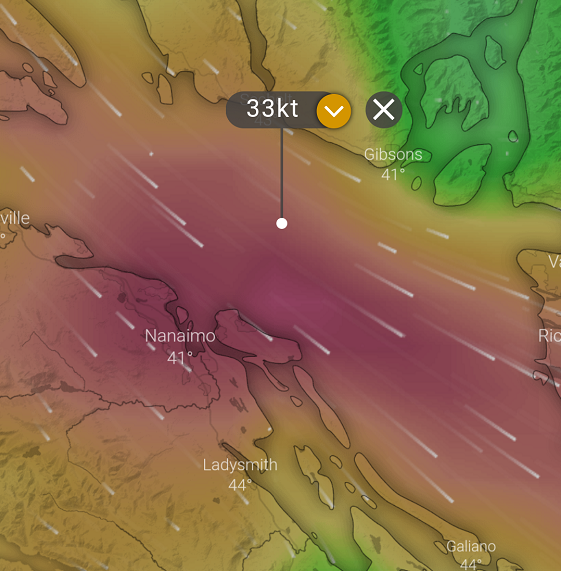If you want to understand the power of the wind, there’s no better way than being on a boat in a gale. It’s truly amazing how the wind can push a boat around like it’s a toy. If I have to be on a boat in a gale though, I’d very much prefer it be in a nice anchorage.
The forecast for Saturday April 27 had been clear well in advance – NW 25-35 kts (later upgraded to NW 30-40). So we had plenty of time to prepare, and slowed down our passage through the Gulf Islands – with strong north winds all week we’d have to wait out this gale in a good anchorage.

There aren’t many good anchorages in the northern Gulf Islands though. The Gulfs are quite challenging compared to the San Juans because most of its anchorages are open to either the northwest or southeast – the two primary wind directions. Strong winds can rule out almost 50% of its anchorages.
We wanted to be close to the northern end of the Gulfs and the passes out to the Strait of Georgia though so we could make our sail across it once the winds calmed down. We decided to try Degnen Bay, on the north side of Gabriola Passage.
But another challenge with Gulf Islands anchorages (in addition to many of them being quite small) is that several of them are crowded with permanently moored boats and unused mooring balls. These include Ganges, Silva Bay, and Degnen Bay. This can make it very difficult to find a good place to anchor.


